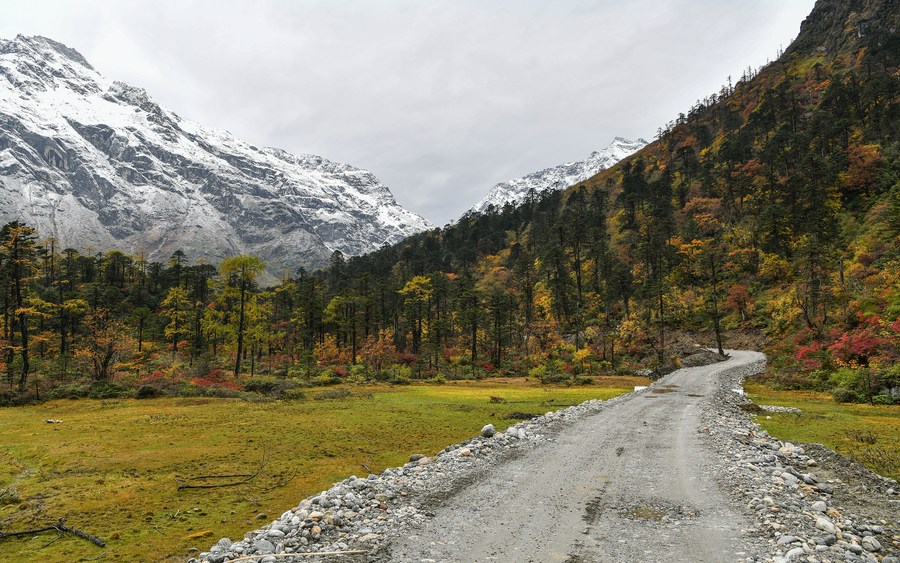
Photo taken on Oct. 24, 2019 shows the autumn scenery along a rural road, which is being built, linking counties of Mainling and Medog in southwest China's Tibet Autonomous Region. (Xinhua/Li Xin)
Tibet has seen accelerated development in rural road construction and transportation in farming and pastoral areas in the last five years. Passenger transport network has also improved in Tibet, with 74 counties, 476 townships and 2,050 administrative villages accessible by buses.
LHASA, Sept. 1 (Xinhua) -- Southwest China's Tibet Autonomous Region had constructed asphalt roads in all its counties by August, the regional transport department said.
The region had also built hard roads in 86.4 percent of its townships and 61.4 percent of administrative villages. So far, it has rebuilt 38,200 km of rural highways, and 86,000 km of rural highways have been opened to traffic, according to the department.
Tibet has a huge amount of land, harsh natural environment and poor transportation conditions due to historical reasons. By the end of 2015, highways had not reached two townships and 230 administrative villages in the region, said Xu Wenqiang, director of the department.
The region has seen accelerated development in rural road construction and transportation in farming and pastoral areas in the last five years. Passenger transport network has also improved in Tibet, with 74 counties, 476 townships and 2,050 administrative villages accessible by buses, Xu added.
So far, 547,000 people have been employed in highway construction projects. Farmers and herdsmen have seen their income increase by 13.72 billion yuan (about 2 billion U.S. dollars) in total, said Tashi Norbu, who works for the rural highway office of the regional transport department. ■



